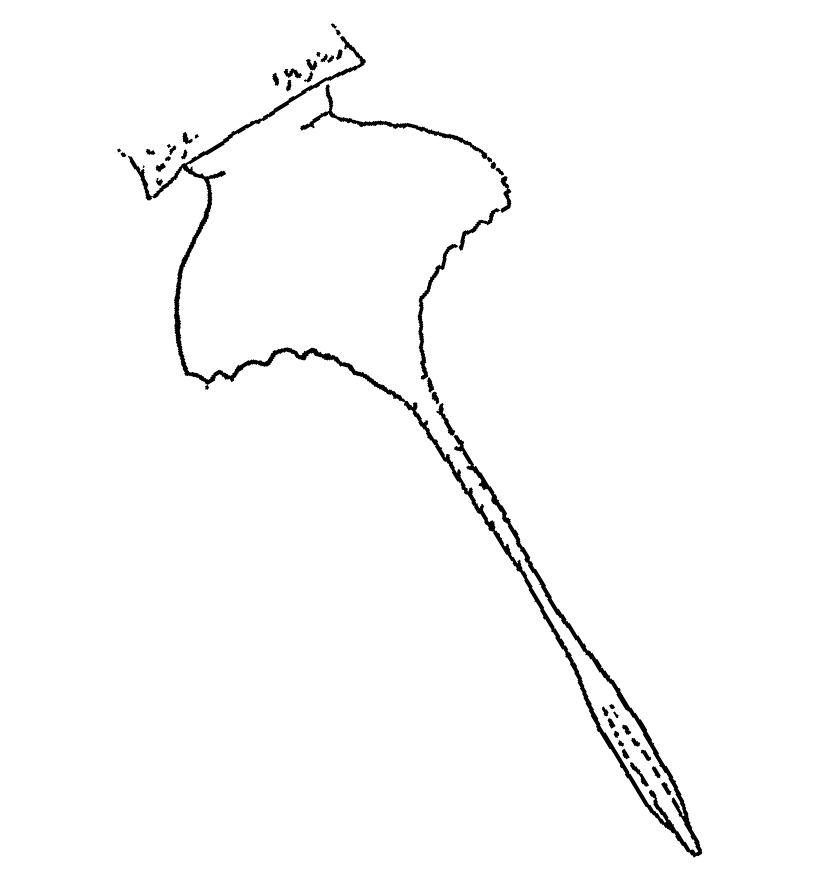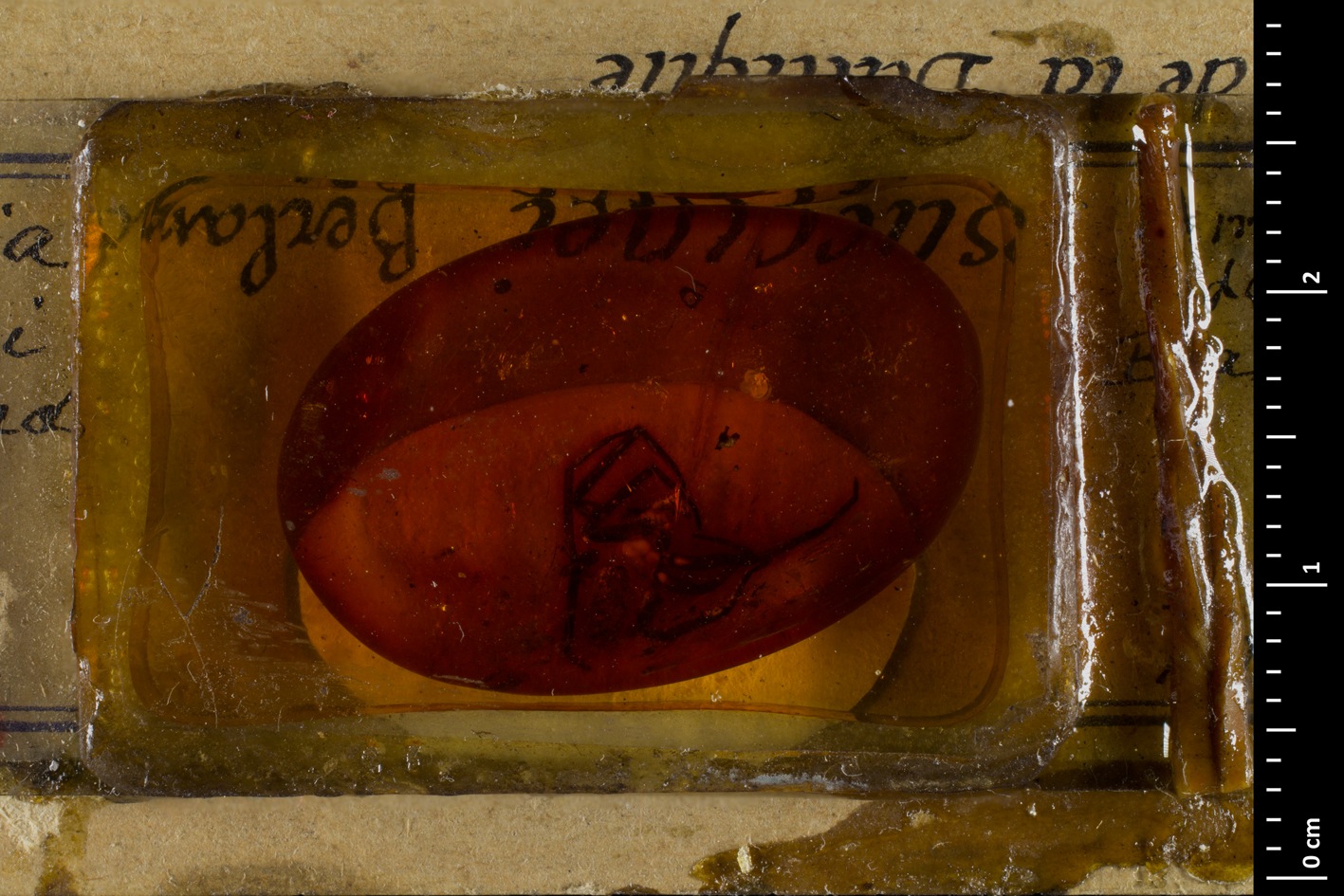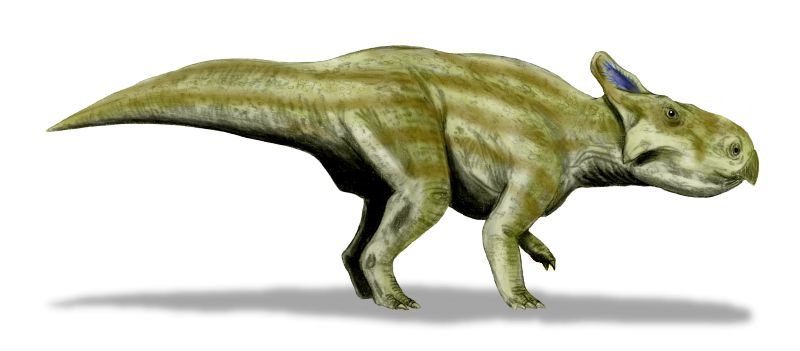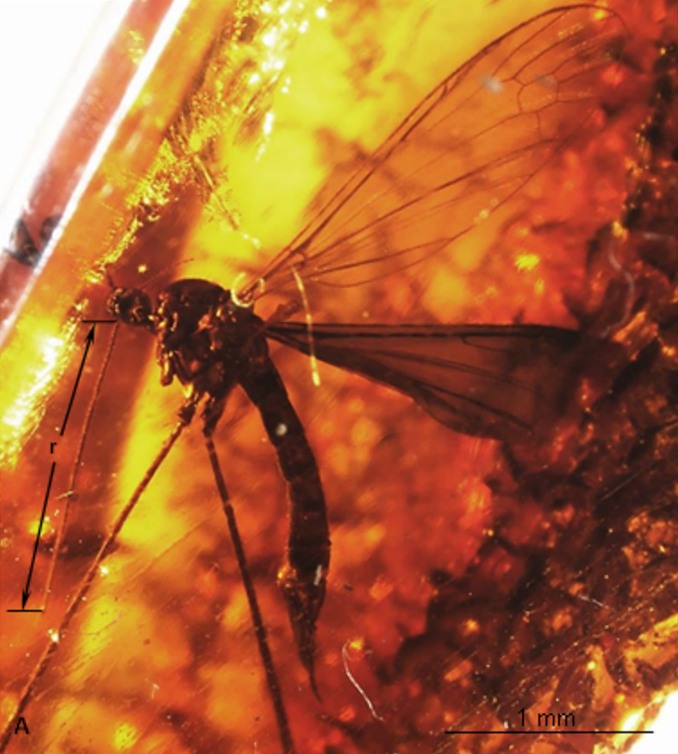|
Salteropterus Longilabium
''Salteropterus'' is a genus of eurypterid, an extinct group of aquatic arthropods. Fossils of ''Salteropterus'' have been discovered in deposits of Late Silurian age in Britain. Classified as part of the family Slimonidae, the genus contains one known valid species, ''S. abbreviatus'', which is known from fossils discovered in Herefordshire, England, and a dubious species, ''S. longilabium'', with fossils discovered in Leintwardine, also in Herefordshire. The generic name honours John William Salter, who originally described ''S. abbreviatus'' as a species of ''Eurypterus'' in 1859. ''Salteropterus'' is assumed to have been quite similar to its close relative '' Slimonia'', but the fragmentary nature of the fossil remains of ''Salteropterus'' make direct comparisons difficult. ''Salteropterus'' does however preserve a highly distinctive telson (the posteriormost division of the body) unlike any other in the Eurypterida. Beginning with an expanded and flattened section, like that ... [...More Info...] [...Related Items...] OR: [Wikipedia] [Google] [Baidu] |
Late Silurian
The Silurian ( ) is a geologic period and system spanning 24.6 million years from the end of the Ordovician Period, at million years ago ( Mya), to the beginning of the Devonian Period, Mya. The Silurian is the shortest period of the Paleozoic Era. As with other geologic periods, the rock beds that define the period's start and end are well identified, but the exact dates are uncertain by a few million years. The base of the Silurian is set at a series of major Ordovician–Silurian extinction events when up to 60% of marine genera were wiped out. One important event in this period was the initial establishment of terrestrial life in what is known as the Silurian-Devonian Terrestrial Revolution: vascular plants emerged from more primitive land plants, dikaryan fungi started expanding and diversifying along with glomeromycotan fungi, and three groups of arthropods (myriapods, arachnids and hexapods) became fully terrestrialized. A significant evolutionary milestone during t ... [...More Info...] [...Related Items...] OR: [Wikipedia] [Google] [Baidu] |
British Geological Survey
The British Geological Survey (BGS) is a partly publicly funded body which aims to advance geoscientific knowledge of the United Kingdom landmass and its continental shelf by means of systematic surveying, monitoring and research. The BGS headquarters are in Keyworth, Nottinghamshire, England. Its other centres are located in Edinburgh, Wallingford, Cardiff and London. The current motto of the BGS is: ''Gateway to the Earth''. History and previous names The Geological Survey was founded in 1835 by the Board of Ordnance as the Ordnance Geological Survey, under Henry De la Beche. This was the world's first national geological survey. It remained a branch of the Ordnance Survey for many years. In 1965, it was merged with the Geological Museum and Overseas Geological Surveys, under the name of Institute of Geological Sciences. On 1 January 1984, the institute was renamed the British Geological Survey (and often referred to as the BGS), a name still carried today. Competenc ... [...More Info...] [...Related Items...] OR: [Wikipedia] [Google] [Baidu] |
1939 In Paleontology
Arthropods Newly named Arachnids Newly named insects Archosauromorpha Newly named dinosaurs Data courtesy of George Olshevky's dinosaur genera list. Plesiosaurs * Plesiosaur gastroliths A gastrolith, also called a stomach stone or gizzard stone, is a rock held inside a gastrointestinal tract. Gastroliths in some species are retained in the muscular gizzard and used to grind food in animals lacking suitable grinding teeth. In oth ... documented.Riggs (1939). Sanders, Manley, and Carpenter (2001), "Table 12.1" page 167. References {{portal, Paleontology * Riggs, Elmer Samuel; 1939a; A specimen of Elasmosaurus serpentinus; Geological Series of Field Museum of Natural History; VI(No. 25) pp. 385–391 * Sanders F, Manley K, Carpenter K. Gastroliths from the Lower Cretaceous sauropod Cedarosaurus weiskopfae. In: Tanke D.H, Carpenter K, editors. Mesozoic vertebrate life: new research inspired by the paleontology of Philip J. Currie. Indiana University Press; Bloomingt ... [...More Info...] [...Related Items...] OR: [Wikipedia] [Google] [Baidu] |
1951 In Paleontology
Archosaurs Newly named dinosaurs Data courtesy of George Olshevsky's dinosaur genera list. Synapsids Non-mammalian References {{portal, Paleontology 1950s in paleontology Paleontology Paleontology (), also spelled palaeontology or palæontology, is the scientific study of life that existed prior to, and sometimes including, the start of the Holocene epoch (roughly 11,700 years before present). It includes the study of fossi ... Paleontology 1 ... [...More Info...] [...Related Items...] OR: [Wikipedia] [Google] [Baidu] |
Eurypterus Acuminatus
''Herefordopterus'' is a genus of eurypterid, an extinct group of aquatic arthropods. ''Herefordopterus'' is classified as part of the family Hughmilleriidae, a basal family in the highly derived Pterygotioidea superfamily of eurypterids. Fossils of the single and type species, ''H. banksii'', have been discovered in deposits of Silurian age in Herefordshire and Shropshire, England. The genus is named after Herefordshire, where most of the ''Herefordopterus'' fossils have been found. The specific epithet honors Richard Banks, who found several well-preserved specimens, including the first ''Herefordopterus'' fossils. ''Herefordopterus'' is classified in Hughmilleriidae, a pterygotioid family that is differentiated by their streamlined bodies, the enlargement of its medium-sized chelicerae and the presence of paired spines on the walking appendages. It was distinguished for combining characteristics of ''Hughmilleria'' with those of the derived pterygotioids, showing a more advan ... [...More Info...] [...Related Items...] OR: [Wikipedia] [Google] [Baidu] |
Pterygotus
''Pterygotus'' is a genus of giant predatory eurypterid, a group of extinct aquatic arthropods. Fossils of ''Pterygotus'' have been discovered in deposits ranging in age from Middle Silurian to Late Devonian, and have been referred to several different species. Fossils have been recovered from four continents; Australia, Europe, North America and South America, which indicates that ''Pterygotus'' might have had a nearly cosmopolitan (worldwide) distribution. The type species, ''P. anglicus'', was described by Swiss naturalist Louis Agassiz in 1839, who gave it the name ''Pterygotus'', meaning "winged one". Agassiz mistakenly believed the remains were of a giant fish; he would only realize the mistake five years later in 1844. ''Pterygotus'' was among the largest eurypterids. Isolated fossil remains of a large chelicera (frontal appendage) suggests that the largest known species, ''P. grandidentatus'', reached a body length of . Several other species, notably ''P. impacatus'' at ... [...More Info...] [...Related Items...] OR: [Wikipedia] [Google] [Baidu] |
Geological Society Of London
The Geological Society of London, known commonly as the Geological Society, is a learned society based in the United Kingdom. It is the oldest national geological society in the world and the largest in Europe with more than 12,000 Fellows. Fellows are entitled to the postnominal FGS (Fellow of the Geological Society), over 2,000 of whom are Chartered Geologists (CGeol). The Society is a Registered Charity, No. 210161. It is also a member of the Science Council, and is licensed to award Chartered Scientist to qualifying members. The mission of the society is: "Making geologists acquainted with each other, stimulating their zeal, inducing them to adopt one nomenclature, facilitating the communication of new facts and ascertaining what is known in their science and what remains to be discovered". History The Society was founded on 13 November 1807 at the Freemasons' Tavern, Great Queen Street, in the Covent Garden district of London. It was partly the outcome of a previous cl ... [...More Info...] [...Related Items...] OR: [Wikipedia] [Google] [Baidu] |
1869 In Paleontology
Arthropods Insects Dinosaurs Plesiosaurs New taxa Pterosaurs New taxa Paleontologists * Death of German Paleontologist Christian Hermann Erich von Meyer.{{cite book, last = Farlow, first = James O., author2= M. K. Brett-Surmann, title = The Complete Dinosaur, publisher = Indiana University Press, year = 1999, location = Bloomington, Indiana, pages = 11, isbn = 0-253-21313-4 References 1860s in paleontology Paleontology Paleontology (), also spelled palaeontology or palæontology, is the scientific study of life that existed prior to, and sometimes including, the start of the Holocene epoch (roughly 11,700 years before present). It includes the study of fossi ... Paleontology 9 Paleontology, 1869 In ... [...More Info...] [...Related Items...] OR: [Wikipedia] [Google] [Baidu] |
Arthropod Coxa
The arthropod leg is a form of jointed appendage of arthropods, usually used for walking. Many of the terms used for arthropod leg segments (called podomeres) are of Latin origin, and may be confused with terms for bones: ''coxa'' (meaning hip, plural ''coxae''), ''trochanter'', ''femur'' (plural ''femora''), ''tibia'' (plural ''tibiae''), ''tarsus'' (plural ''tarsi''), ''ischium'' (plural ''ischia''), ''metatarsus'', ''carpus'', ''dactylus'' (meaning finger), ''patella'' (plural ''patellae''). Homologies of leg segments between groups are difficult to prove and are the source of much argument. Some authors posit up to eleven segments per leg for the most recent common ancestor of extant arthropods but modern arthropods have eight or fewer. It has been argued that the ancestral leg need not have been so complex, and that other events, such as successive loss of function of a ''Hox''-gene, could result in parallel gains of leg segments. In arthropods, each of the leg segments artic ... [...More Info...] [...Related Items...] OR: [Wikipedia] [Google] [Baidu] |
Hughmilleria
''Hughmilleria'' is a genus of eurypterid, an extinct group of aquatic arthropods. Fossils of ''Hughmilleria'' have been discovered in deposits of the Silurian age in China and the United States. Classified as part of the basal family Hughmilleriidae, the genus contains three species, ''H. shawangunk'' from the eastern United States, ''H. socialis'' from Pittsford, New York, and ''H. wangi'' from Hunan, China. The genus is named in honor of the Scottish geologist Hugh Miller. ''H. socialis'' is the type species of Hughmilleriidae, a eurypterid family classified in the superfamily Pterygotioidea that is differentiated by their streamlined bodies, the enlargement of their medium-sized chelicerae and the presence of paired spines on the walking appendages. With the biggest specimen measuring 20 centimetres (8 inches) in length, ''Hughmilleria'' is considered a eurypterid of small size. Description ''Hughmilleria'' is the most basal (primitive) known member of the Pterygotioidea. ... [...More Info...] [...Related Items...] OR: [Wikipedia] [Google] [Baidu] |
Perton, Herefordshire
Perton is a hamlet in the English county of Herefordshire. It is in the civil parish of Stoke Edith Stoke Edith is a village in the English county of Herefordshire, situated on the A438 road between Hereford and Ledbury. The population in 1801 of Stoke Edith parish was 332. The 14th-century church of St Mary is a grade I listed building. It h ... being west of the village of that name. External links Villages in Herefordshire {{Herefordshire-geo-stub ... [...More Info...] [...Related Items...] OR: [Wikipedia] [Google] [Baidu] |
Herefordopterus
''Herefordopterus'' is a genus of eurypterid, an extinct group of aquatic arthropods. ''Herefordopterus'' is classified as part of the family Hughmilleriidae, a basal family in the highly derived Pterygotioidea superfamily of eurypterids. Fossils of the single and type species, ''H. banksii'', have been discovered in deposits of Silurian age in Herefordshire and Shropshire, England. The genus is named after Herefordshire, where most of the ''Herefordopterus'' fossils have been found. The specific epithet honors Richard Banks, who found several well-preserved specimens, including the first ''Herefordopterus'' fossils. ''Herefordopterus'' is classified in Hughmilleriidae, a pterygotioid family that is differentiated by their streamlined bodies, the enlargement of its medium-sized chelicerae and the presence of paired spines on the walking appendages. It was distinguished for combining characteristics of '' Hughmilleria'' with those of the derived pterygotioids, showing a more adva ... [...More Info...] [...Related Items...] OR: [Wikipedia] [Google] [Baidu] |










